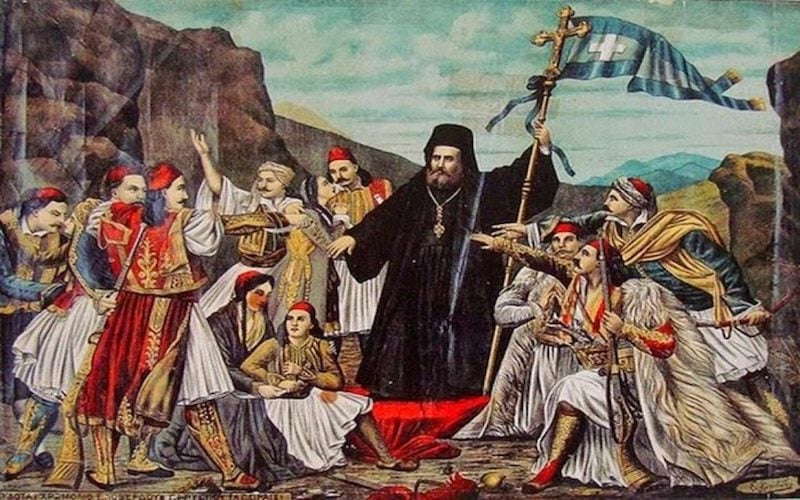
The Greek War of Independence, which brought about the birth of the modern Hellenic nation, is full of memorable events, most of them bloody battles and incredible feats of heroism.
The war cry “Freedom or Death” echoed across Greece as a smattering of heroes fought against the vast army and navy of the Ottoman Empire, the underarmed against the well-armed, those desperate for freedom against their complacent overlords.
The spark was provided by enlightened Greeks living mostly in Europe and Russia, thirsty for the rebirth of a once-glorious nation that had been deliberately reduced to a land of poor, uneducated masses subservient to their Ottoman rulers.
1814: The founding of the Filiki Eteria sparks Greek War of Independence
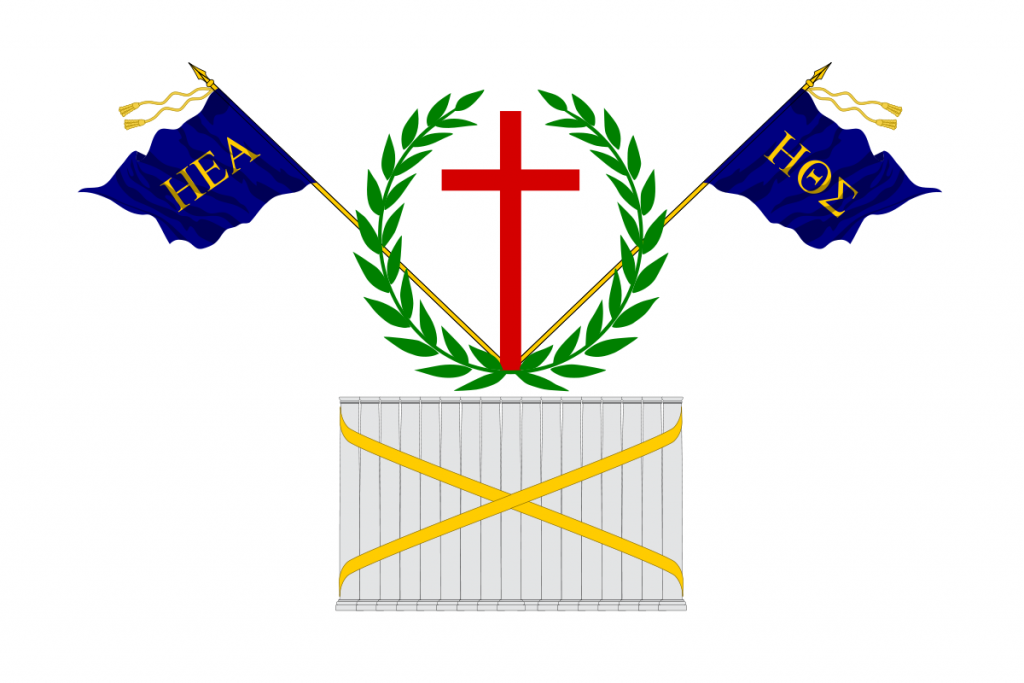
The Filiki Eteria, or Society of Friends, was a secret organization founded in 1814 in Odessa, Russia (now in Ukraine) with the purpose of overthrowing Ottoman rule in Greece and establishing an independent Greek state.
The Society’s members were mainly educated, young Phanariot Greeks from Constantinople and the Russian Empire, but also included Greek politicians and military leaders and affluent academics as well as several Orthodox Christian leaders from other nations.
March 13, 1821: Bouboulina raises the flag of revolution

The first flag of the revolution was actually raised on the island of Spetses by Laskarina Bouboulina. Twice widowed, with seven children, she was extremely wealthy, owning several ships.
On April 3 Spetses revolted against Ottoman rule, followed by the islands of Hydra and Psara. Between them the islands had a fleet of over 300 ships to use in the War. Bouboulina and her fleet of eight ships sailed to Nafplion and took part in the siege of the impregnable fortress there.
In the attack on Monemvasia later, she even managed to capture the fortress. She also took part in the blockade of Pylos and brought supplies to the revolutionaries by sea.
Bouboulina became a national hero, one of the first women to play a major role in the Greek War of Independence. Without her, and her ships, the Greeks might not have won the war.
March 17, 1821 Mani declares war of Independence on the Ottomans
On March 17, 1821, the Maniots, descendants of the Spartans on the Mani peninsula in Peloponnese, declared war in Areopoli. The same day, a force of 2,000 Maniots under the command of Petros Mavromichalis advanced on the Messenian town of Kalamata.
There, they joined forces with the troops under the command of the revolutionaries Theodoros Kolokotronis, Nikitaras and Papaflessas. Kalamata fell to the Greeks on March 23, while in Achaia, the town of Kalavryta was besieged on March 21.
March 25, 1821: Greek War of Independence is declared
The Greek War of Independence was declared on March 25, 1821 by Metropolitan Germanos of Patras, who raised the Revolutionary banner with its cross in the Monastery of Agia Lavra, near Kalavryta.
Although some historians doubt the historicity of this event, the date is part of the consciousness of Greeks as the official date of the declaration of Greece’s War of Independence.
It is also said that such was the determination of those present, that they shouted “Eleftheria I thanatos (Freedom or death).”

April 23, 1821: The brutal killing of Athanasios Diakos
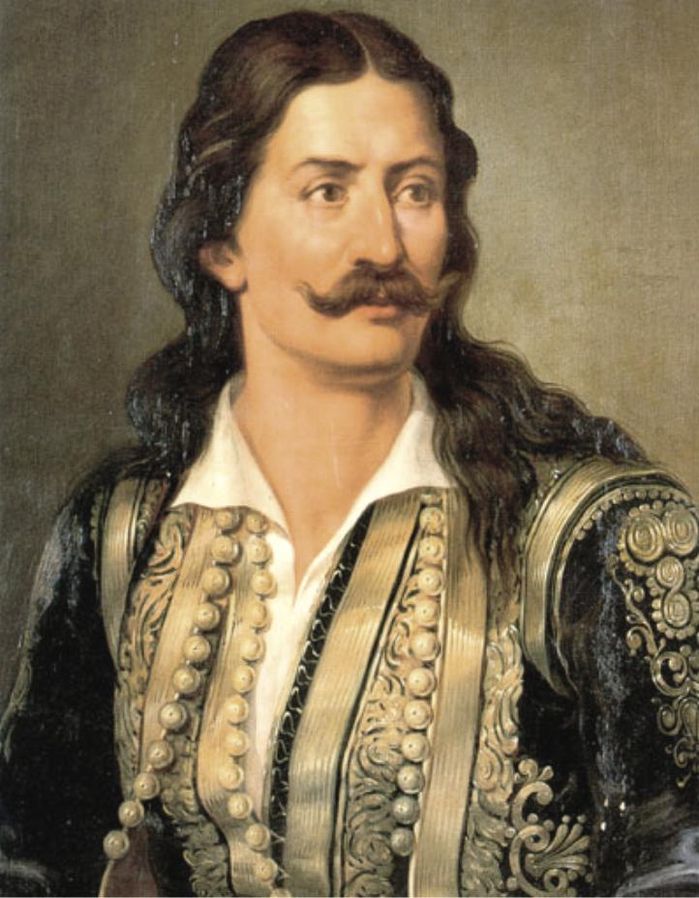
Athanasios Diakos, whose real name was Athanasios Grammatikos, starred in the revolution of Eastern Central Greece, triumphing in many battles against the Ottomans in the region.
He had even managed to take over Livadia, Thebes and Atalanta as a result of his perspicacity and courage. At the Battle of Alamana, Diakos and his band of just a few men confronted Kiose Mehmet and Omer, who had been ordered to suppress the revolution in Roumeli (as Central Greece was named then).
After a heroic battle, Diakos was wounded and taken prisoner. He was then asked to renounce his Christian faith and collaborate with the Ottomans; but he refused.
The defiance of the Greek hero and his devotion to Greece and his faith became legend. His extraordinarily gruesome punishment — death by impalement — became a symbol of the Ottomans’ barbarism and brutality.
May 8, 1821: Battle at Gravia Inn
Just one month after that, Omer Vryonis with his troops continued his advance in Central Greece, while Chieftain Odysseas Androutsos and his men were locked up in Gravia Inn, a strategic, narrow spot on the road.
When the Ottomans approached, they asked the rebelling Greeks to surrender, sending a messenger to negotiate. Androutsos then started fighting the attackers, shooting the messenger dead.
The Ottomans attacked the inn but were repulsed with great ease. Vryonis, seeing his men falling from the Greek bullets, ordered for cannons to blow up the inn.
But before the cannons arrived, the Greeks somehow managed to flee the inn. More than 300 Ottomans were killed and 600 were wounded, while the Greeks lost only six warriors as a result of the action that day.

May 13, 1821: The battle at Valtetsi
The Greek Army under General Theodoros Kolokotronis then began to approach Tripolitsa (today’s Tripolis), the most important fort of the Ottomans, which was the center of their power in Morias in the Peloponnese, with Kehagia Bey ruling at the time.
On May 12, Kehagia Bey left Tripolitsa with 12,000 men, heading for Kalamata to take back the city from the Greeks. Kolokotronis was notified and attacked the Ottomans — with just 700 men.
The battle continued until night without any side retreating. In the early hours of May 13, the Ottomans launched a new offensive. After 23 hours of fighting, Kehagia Bey ordered a retreat and Kolokotronis forced them to flee erratically, dropping their weapons.
In total, the Ottomans had sustained 300 fatalities and there were more than 500 wounded, while the Greeks had only two deaths. The Greeks, who for the first time fought in an organized manner and using real strategy, then gained confidence, realizing their tactical superiority over the Ottomans.
September 23, 1821: Greeks capture Tripolitsa
After months of siege, 15,000 Greek troops had surrounded Tripolitsa, waiting for the right moment to take over the main fort of the enemy in Morias.
On September 23, the two sides were negotiating the conditions for the Ottomans to surrender, while the Albanian troops who fought on the side of the rulers were ready to leave the city.
Because of the turmoil, the cannon tower of the Nafplia gate of Nafplia was left unguarded. In the morning, fifty men, on their own initiative, started climbing the wall by standing on top of each other’s shoulders. Once in, they opened the gate and raised the Greek flag.
The Greeks then opened other gates, and the entire army rushed into the city. The massacre that followed was horrific. “My horses hooves did not touch the ground from the walls to the palace”, Kolokotronis wrote later in his memoirs.
The Greeks killed thousands of Ottomans. The real gain for the rebelling Greeks was 11,000 weapons, while their morale was boosted to the skies.
In another important milestone, the Greek victory was hailed in the international press as a turning point in the Greek War of Independence.
January 1st, 1822: The provisional Constitution
This first day of the year marked the date when the National Assembly of Epidaurus voted for the first constitution of the Greek War of Independence, better known as the “Provisional Polity of Greece.” Its preamble proclaims the nation’s decision for “political presence and independence.”
The text is clearly influenced not only by the French Constitutions of 1793 and 1795, but also by the American Declaration of Independence, signed on July 4, 1776, and the American Constitution of 1787.
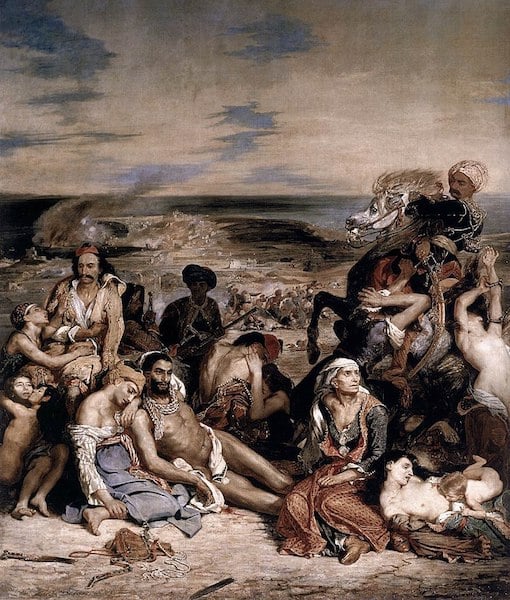
March 30, 1822: The Chios Massacre
Greeks from neighboring islands had arrived on Chios and encouraged the Chians to join the national revolt. Several Greek troops from Samos landed on the island and attacked the Turks in the citadel.
Even though many Chians joined the cause, the vast majority of the island’s population did not want to join the revolution.
Nevertheless, the Ottoman rulers responded vengefully to the killing of the soldiers and sent thousands of troops who landed on the island and killed an estimated 42,000 – 52,000 Chians.
The massacre of Chios provoked international outrage and led to increasing support for the Greek cause worldwide.
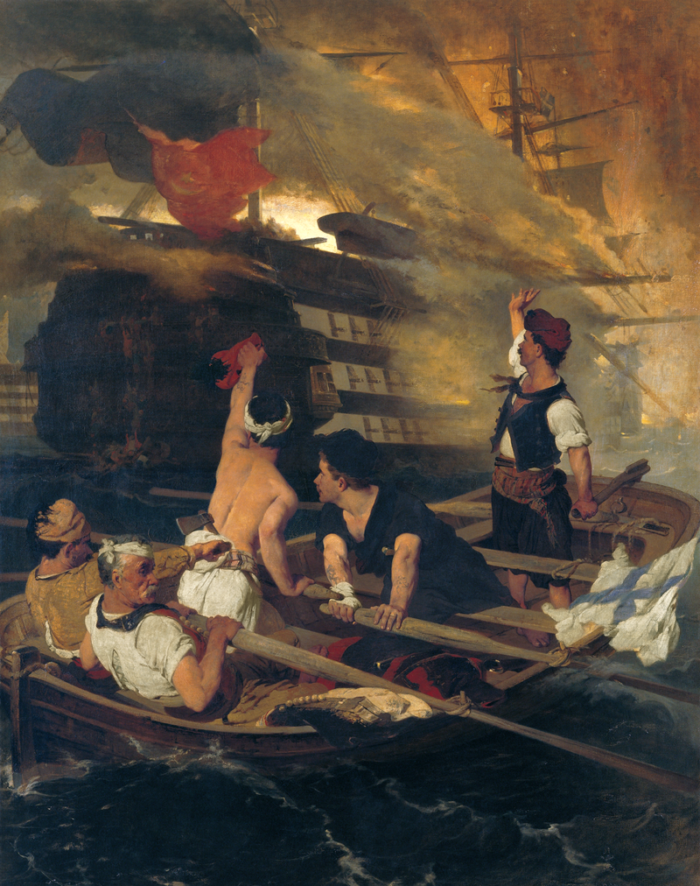
June 6, 1822: Constantine Kanaris destroys Turkish flagship
At Chios, Greek forces under the command of admiral Constantine Kanaris destroyed the flagship of the Turkish admiral Nasuhzade Ali Pasha (or Kara-Ali Pasha) in retaliation for the Chios Massacre.
While the Turkish admiral was holding a celebration, Kanaris and his men managed to place a fire ship next to it. When the flagship’s powder store caught fire, all the men aboard were instantly killed in the resulting explosion.
The Ottoman casualties were 2,000 men, including both naval officers and common sailors, as well as Kara-Ali himself.
July 26, 1822: The Battle at Dervenakia
The outcome of the victorious Battle at Dervenakia, also known as the Dramalis Massacre, was the destruction of a significant part of the Ottoman forces under General Mahmut Pasha Dramalis.
Coming from Drama in the north of Greece to the Peloponnesian peninsula with 30,000 men, Dramalis (Drama Ali) wanted to take back the city of Tripolitsa. They took Corinth by storm and moved towards Argolis.
Kolokotronis and his men were positioned in two of the four small mountain passes, called Dervenakia, between Corinth and the Argos valley.
Trapped in the narrow passages, the Ottoman soldiers were soon the prey of the hidden Greeks. The Ottomans counted 2,500-3,000 dead and wounded, while Kolokotronis established his name as a great general in the action.
July 5, 1824: The destruction of Psara
The destruction of Psara was one of the most moving tragedies of the Greek War of Independence, as the Ottomans completely laid waste the civilian population of the island of Psara.
At the time, the entire island’s population was about 7,000. After the massacre, the population of the island never rose over 1,000.
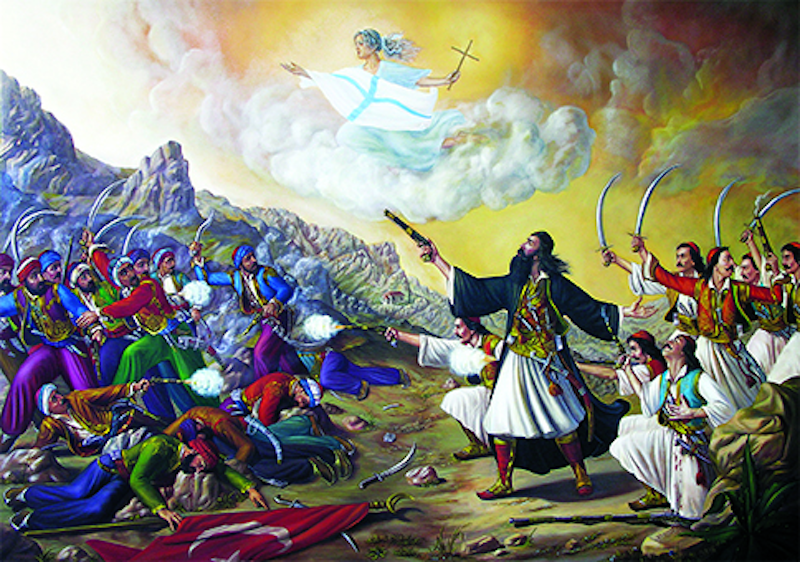
May 20, 1825: The fall of Papaflessas at Maniaki
On February 26, 1825, the Egyptian army of Ibrahim Pasha landed undisturbed in Methoni, in the Peloponnese, with 4,000 infantry and 400 cavalry and took over the city’s castle. His plan was to take back the entire Peloponnesian peninsula from the Greeks.
In the following days he was reinforced with more troops and the total number of his infantry reached 15,000. By the end of April he had occupied the strategic castles of Koroni and Pylos (Neokastro).
On May 20, the Greek hero Papaflessas decided to repulse the Egyptians himself. With a force of 3,000 Greeks, Papaflessas marched south to attack Ibrahim. However, half of his men unfortunately deserted when they saw the Egyptian Army approaching.
Ibrahim was leading a force of over 6,000 soldiers. Papaflessas gave an eloquent speech that shored up the morale of the remaining Greeks who had decided to stay and fight.
As the Egyptians attacked, the Greeks bravely held their positions but were eventually overwhelmed. About 1,000 Greeks, including Papaflessas, fell.
The head and body of Papaflessas were recovered and placed upright on a post, as a mark of respect for a valiant foe. Legends say that Ibrahim even kissed Papaflessas’ head and said “If all Greeks were like him, I would not take charge of this campaign.”
June 13, 1825: The victorious Battle at the Lerna Mills
The battle at the Lerna Mills in Argolis, Peloponnese, was one of the most crucial, yet little known, victories of the Greek rebellion.
By early June, the Ibrahim Pasha’s mighty army had beaten Papaflessas’ Greek Army at Maniaki and on June 7 recaptured Tripolitsa, which had been abandoned by the Greeks.
Ibrahim Pasha then sent 5,000 troops to take over Nafplion, the seat of the Greek government.
Yet, somehow, the Greek forces of about 500 men, led by Captain Yannis Makriyannis, Demetrios Ypsilantis, Andreas Metaxas and Konstantinos Mavromichalis, defeated the Egyptian army. This, the first Greek success against Ibrahim, saved the city of Nafplion.

April 10, 1826: The heroic exodus and fall of Missolonghi
In April 1825, Reshid Mehmed Pasha received the following order from the Sultan: “Either Missolonghi falls or your head falls.” It would be the third siege of the western Greece city, after two failed attempts.
It was a difficult task to take over the fortified city, which was surrounded by lakes. The brave chieftains Notis Botsaris and Kitsos Tzavellas led the defense of the city with forces comprised of 3,000 men — with several philhellenes among them.
The siege lasted an entire year, with Ibrahim Pasha joining the attack after the first months. Yet, what the vast Egyptian army could not achieve, was in the end achieved by starvation and disease.
The defending captains decided to lead the starving civilians to a heroic exodus, while those who could not follow would stay and defend the city to the death.
When the Greeks charged out of the city gates they were fired upon by Turks and Egyptians. Many panicked and fled back inside the walls while the Ottoman-Egyptian forces had already entered the city, killing, looting and raping.
Of the 7,000 people who attempted to escape, only 1,000 made it to safety. The rest were slaughtered or sold into slavery, with many of the surviving Greek Christian women becoming sex slaves to Egyptian soldiers. In an especially grisly act, the Turks displayed 3,000 severed heads on the walls of the city.
Yet the Missolonghi massacre proved a victory for the Greek cause in the end, and the Ottomans paid dearly for their harsh treatment of Missolonghi. After this atrocity, many Western Europeans felt increased sympathy for the Greek cause.
The horrific event influenced the eventual decision of Britain, France and Russia to intervene militarily in the Battle of Navarino.
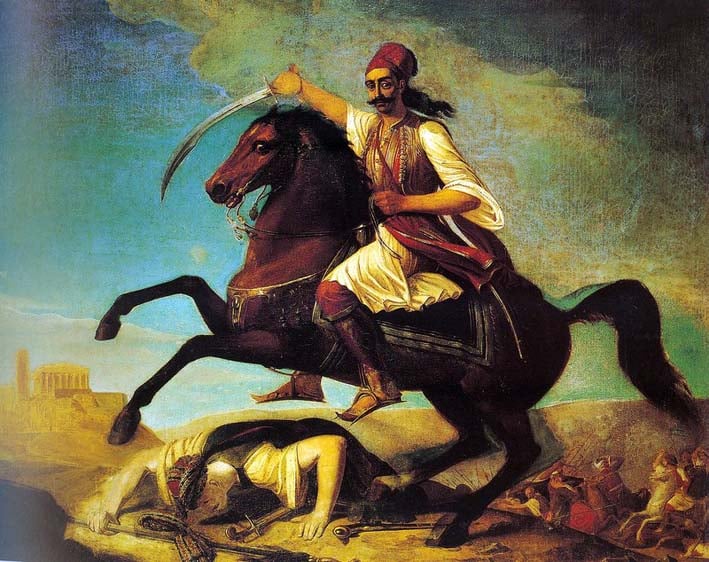
November 18-24, 1826: The Battle of Arachova
The Battle of Arachova brought the name of Georgios Karaiskakis to the forefront, making him one of the most well-known heroes of the Greek Revolution.
The Turkish troops under the command of Mustafa Bey were about to recapture a big part of Roumeli (today’s Central Greece). Yet, after receiving intelligence of the Ottoman army’s manoeuvres, Karaiskakis prepared a surprise attack near the village of Arachova.
On November 18, Mustafa Bey’s 2,000 Ottoman troops were blockaded in Arachova by the Greek Army. An 800-man force that attempted to relieve the defenders three days later failed.
On November 22, Mustafa Bey was mortally wounded and Ottoman morale plunged, as cold weather and heavy rainfall plagued the hunger-stricken defenders.
At midday, on November 24 the Ottomans made an attempt at breaking out. Most were killed in the fighting or perished from the cold. The Greek victory at Arachova gained the rebels valuable time before the Great Powers came to their assistance a year later.
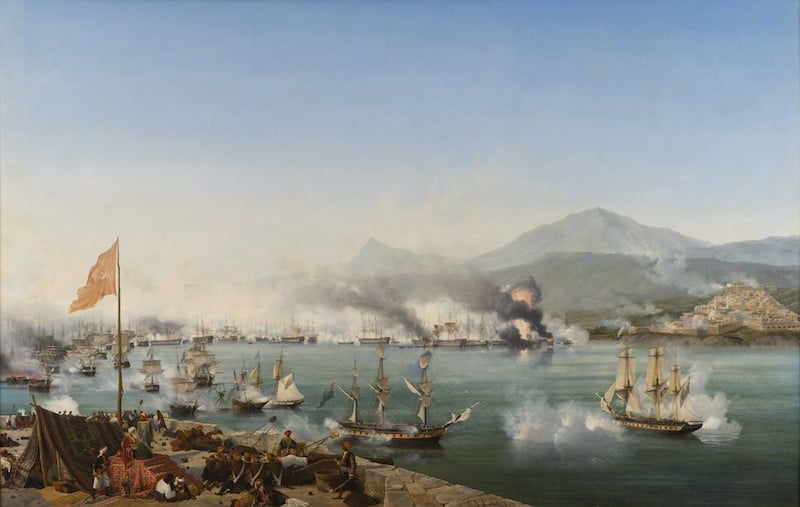
October 20, 1827: The Battle of Navarino seals victory in the Greek War of Independence
On that fateful day, British, French and Russian squadrons entered the harbor at Navarino Bay on the west coast of the Peloponnese peninsula, in the Ionian Sea.
An Ottoman armada which, in addition to imperial warships, included squadrons from Egypt and Tunis, was destroyed by the Allied forces. Virtually the entire Ottoman fleet was decimated, despite the great bravery of the Ottoman crews.
It was to be the last major naval battle in history to be fought entirely with sailing ships, although most ships fought at anchor.
The Allied naval forces essentially put an end to Turkish plans to recapture the parts of Greece they had lost after centuries of rule. The casualties were extremely high and morale was at a low point after that day.
April 26, 1828: Russia declares war on Turkey
The Russo-Turkish War was sparked by the Greek War of Independence, breaking out after the Ottoman Sultan Mahmud II closed the Dardanelles to Russian ships and revoked the 1826 Akkerman Convention.
The Turkish move was related to the Greek War of Independence because the closing of the Dardanelles was in retaliation for the Russian participation in the Battle of Navarino. Greeks welcomed the war because the Ottoman troops would be leaving the newly-founded state to fight the Russians.
May 7, 1832: The Treaty of London establishes the state of Greece
The Treaty of London, signed by Britain, France and Russia, established a new Greek state, making Otto of Bavaria the new King of Greece, and defining Greece as an independent kingdom.
See all the latest news from Greece and the world at Greekreporter.com. Contact our newsroom to report an update or send your story, photos and videos. Follow GR on Google News and subscribe here to our daily email!



